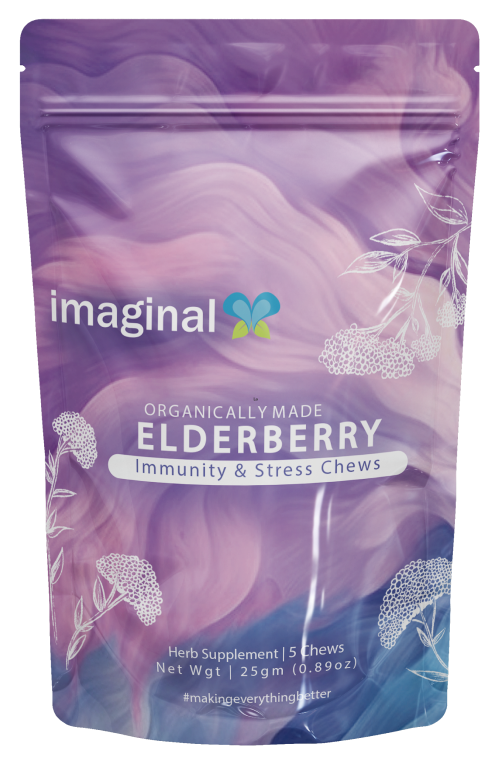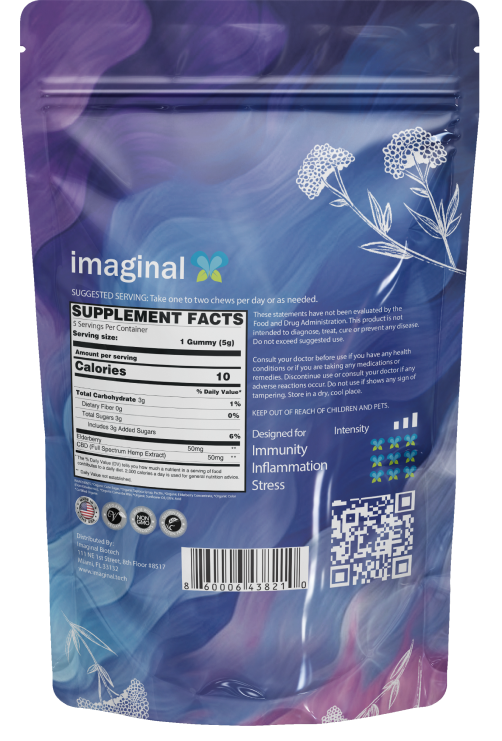When it comes to managing pain with CBD, using the right ratio can make all the difference. Most experts say the most effective CBD ratio for pain is 1:1 (CBD: THC).
However, it's essential to know that experts recommend different CBD ratios for different kinds of pain, which is what we’ll explore today.
But before diving into that, let's understand how CBD helps with pain management.
Table of Contents
How Does CBD Help With Pain Management?
Every pain-relieving CBD product contains two major cannabinoids. These are:
- Cannabidiol (CBD)
- Tetrahydrocannabinol (THC)
CBD is the non-intoxicating element in cannabis that interacts with your endocannabinoid system (ECS) once it enters the body.
As soon as it interacts with the ECS system, it blocks the activity of certain enzymes that contribute to inflammation and pain. It also activates CB1 receptors, which help numb pain.
CBD is particularly effective for mild to severe stress, joint inflammation, and body pain caused by chronic illnesses. The compound also exhibits neuroprotective properties, meaning it can benefit people experiencing neuropathic pain like trigeminal neuralgia.
In fact, a recent letter to the editor by neurologist Ethan Russo, MD mentions that CBD has a lower risk profile than opioids, which are medical science’s strongest drugs to treat pain. He cites a large Canadian study looking at 1145 chronic pain patients who were able to reduce their daily morphine (an opioid) consumption by 78% through the use of CBD.

Here, it’s important to remember that the quantity of CBD you ingest directly impacts the amount of pain relief you experience. It also determines how quickly CBD will cause the pain to stop.
But this doesn't mean you can take an unusually large dose of CBD for pain relief.
Taking CBD in excess could lead to fatigue, drowsiness, undesirable changes in appetite and weight, and digestive issues like diarrhea. Although these effects will be temporary, they'll put you through more discomfort instead of reducing it.
As for THC, it's the compound in cannabis that’s responsible for its addictive properties. It's not legal to consume this compound in large quantities. This is why you will find only small amounts of THC (usually below 0.3%) in most CBD products.
THC isn’t entirely banned because it also benefits health if consumed in appropriate quantities. For example, small amounts of THC reduce pain and inflammation by increasing the release of neurotransmitters involved in pain regulation.
Another reason is the entourage effect, which basically refers to the idea that various compounds found in the Cannabis plant need to work together to produce the best results. In other words, the combination of THC and CBD will bring about stronger therapeutic effects as compared to CBD alone as the compounds enhance each other's pain-relieving properties.
But keep in mind that if the ratio of THC in a product is unusually high, it can lead to anxiety, paranoia, and even addiction.
Best CBD Ratio for Pain
As mentioned earlier, there's no one-size-fits-all answer for this. The best CBD ratio to use depends on the type of pain you are experiencing.
However, if we were to quote a generally accepted CBD: THC ratio for pain management, it would be 1:1. It provides a balance of the pain-relieving properties of both compounds and has proven to be effective for neuropathic as well as organic pain.
There's also a medicinal cannabis product named Sativex that uses the same ratio. It helps treat muscle spasms and stiffness.
Alternative Ratios & When to Use Them
Generally, CBD pain-relieving products can have a CBD: THC ratio ranging from 20:1 to 1:1.
Here's an overview of the most suitable ratios for different kinds of pain and disorders:
|
Pain |
Ratio |
|
Mild body pain |
20:1 or 10:1 |
|
Severe or chronic body pain |
1:10 or 1:20 |
|
Neuropathic pain |
1:1 |
|
Insomnia |
20:1 |
|
Epilepsy |
20:1, 10:1, 5:1, or 1:1 |
|
Nausea |
1:1 |
|
Inflammation |
20:1 |
|
Glaucoma-related pain |
1:1 |
|
Anxiety-related pain |
10:1 |
Note that it's essential to consider your body tolerance levels when choosing the right CBD ratio for pain. It’s a good idea to always begin with a low ratio and work your way up.
Imaginal’s Elderberry Gummies: Our Recommendation for CBD Pain Relief
Now that you understand how CBD reduces pain and the best CBD ratio for pain relief, it’s time to choose a product.
When it comes to buying CBD products, it’s crucial to trust a well-known and reliable brand that regularly posts third-party CBD testing results for customers to see. This is why the only products we can recommend are those that we make!
In this regard, many people have reported to us the incredible pain relief they’ve experienced after using our elderberry CBD gummies. These full-spectrum gummies are:
- Vegan
- Organic
- Non-GMO
- Allergen and gluten-free
In addition, we’ve sourced the ingredients for these gummies from sustainably grown US plants, which plays an important role in maintaining their quality. Plus, elderberries are also known for their immunity-boosting effects.
So if you’re looking for a high-quality, easy-to-use CBD product for pain relief, Imaginal’s elderberry CBD gummies are a good place to start.
Final Words
To sum it up, CBD is known for providing pain relief by interacting with CB1 receptors and blocking the production of “pain enzymes”. Both CBD and THC have pain-reducing properties and work better in combination than alone.
When it comes to the best CBD:THC ratio for pain relief, many different options are available depending on the type of pain you have. But medical CBD products like Sativex use a 1:1 ratio for relieving pain.
If you have any questions about our products or using CBD for pain relief, feel free to reach out to us!
(This post has been written by Dr. Eilaf Meenai, MBBS)





